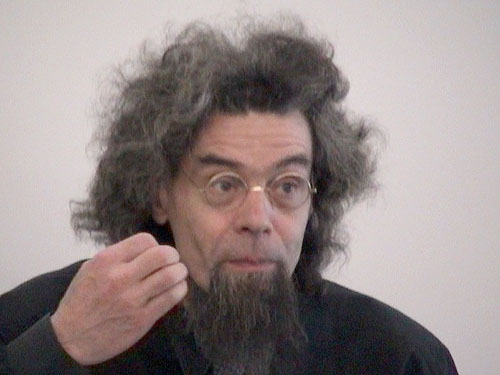The experimental legacy
effects
Godfried-Willem Raes
postdoctoral researcher
Orpheus Institute & Logos Foundation
2022
Circuits to modify sounds are about as old as the electronification of audio itself.
Compressors
The dynamic range of the human ear is in the order of 100dB, that means that the difference between the softest audible sounds and the loudest non-damaging sound is 1 to 100000. Technical apparatus capable of handling such a wide dynamic range of signals only pretty recently became available. Tape recorders had a dynamic range of ca. 46 dB, AM-radio worse than 40 dB, power amplifiers 60 dB or better... Thus compression was required whenever audio had to be transmitted or recorded electronically.
Here is a compressor as designed and used by radio amateurs. The device is inserted between the microphone and the modulation input of the broadcast station. This and similar pieces of equipment were also often used in live electronic performances. In case where a (vocal) signal of a microphone needed to be fed into a ringmodulator, it was of great help in limiting the dynamic range to the possibilities of any subsequent equipment.
Companders:
These circuits became quite popular in the seventies and several analog chips to implement their construction were available. They were often used in concerts were electronic music recorded on tape was presented. The tape was considered 'compressed' and the expander part of the circuit greatly improved the dynamic variations in the music. The once very popular 'Dolby' system for noise reduction was in fact nothing else than a patented frequency dependent compander system. It became fully obsolete with the advent of digital audio and its much larger dynamic range. Once in a while, one may run into old analog tape recordings -or even more likely, audio cassettes- that are Dolby encoded. To playback or remaster such recordings,a Dolby decoder is required. In the seventies and eigthies, special analog chips were available to fullfill this function, but they where never widespread nor cheap. The Dolby encoding was patented and hence there was a charge on every single chip implementing this encoding/decoding system. A solution we ran into is the existence of software plug-ins to use with audio-editing programs that implement the decoding pretty well.
AM modulators (tremolo)
Filters
lowpass
highpass
bandpass
parametric
equalisers
VCF's
resonance filters
formant filters
An important source of inspiration for all musicians involved in live electronics has been the literature on the design of electronic filters used in analog electronic organs.
Distortion
This article is part of a research project on Experimental Legacy financed in part by the Orpheus Institute in Ghent.
Last update: January 4th 2023
www.orpheusinstituut.be
